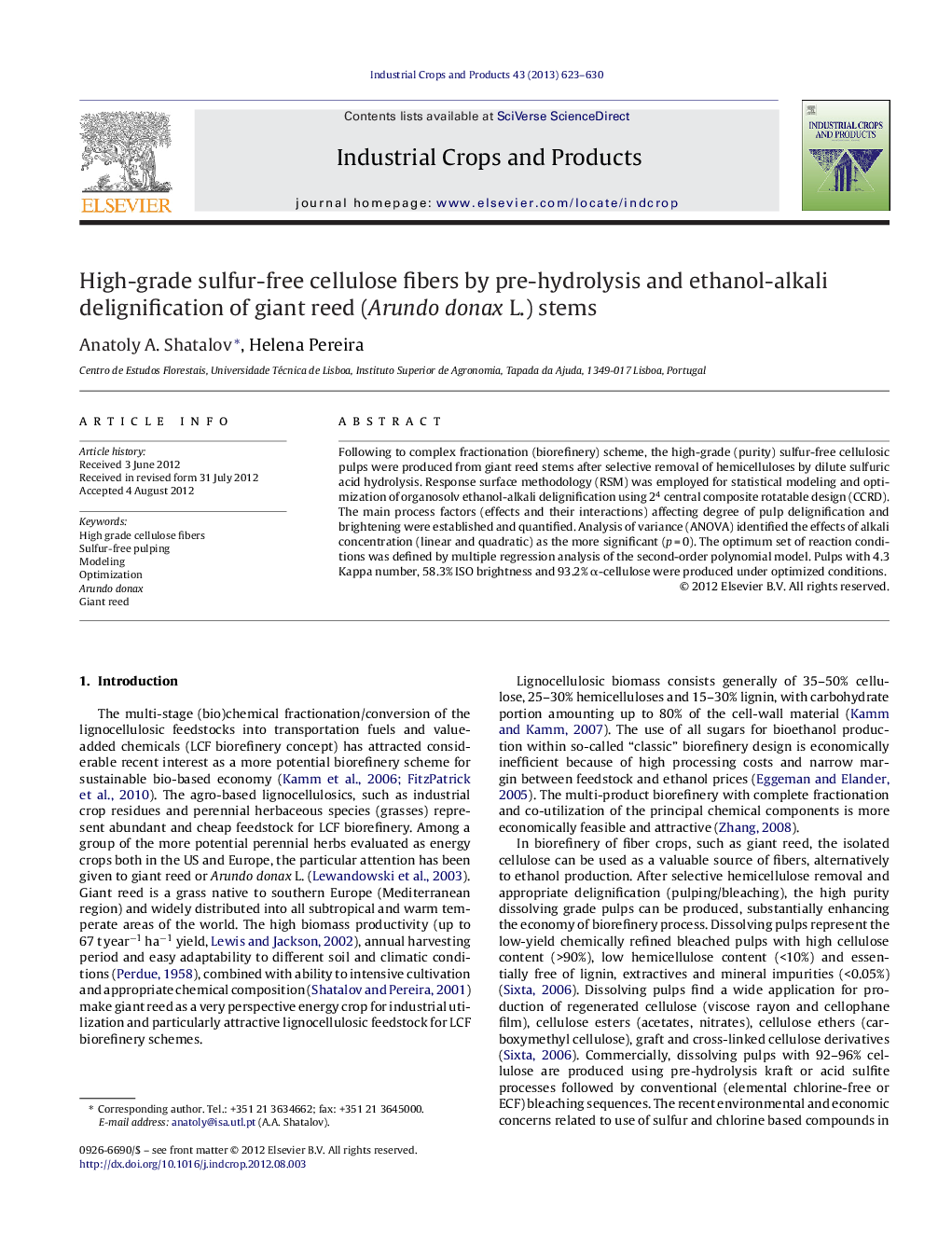| Article ID | Journal | Published Year | Pages | File Type |
|---|---|---|---|---|
| 4514179 | Industrial Crops and Products | 2013 | 8 Pages |
Following to complex fractionation (biorefinery) scheme, the high-grade (purity) sulfur-free cellulosic pulps were produced from giant reed stems after selective removal of hemicelluloses by dilute sulfuric acid hydrolysis. Response surface methodology (RSM) was employed for statistical modeling and optimization of organosolv ethanol-alkali delignification using 24 central composite rotatable design (CCRD). The main process factors (effects and their interactions) affecting degree of pulp delignification and brightening were established and quantified. Analysis of variance (ANOVA) identified the effects of alkali concentration (linear and quadratic) as the more significant (p = 0). The optimum set of reaction conditions was defined by multiple regression analysis of the second-order polynomial model. Pulps with 4.3 Kappa number, 58.3% ISO brightness and 93.2% α-cellulose were produced under optimized conditions.
► High-purity cellulose fibers were produced from xylan-free giant reed stems. ► Response surface methodology was used for pulping modeling and optimization. ► The main factors affecting pulping results were established and quantified. ► ANOVA showed the high statistical significance of the developed model. ► Pulps with 93.2% of alpha-cellulose were produced under optimized conditions.
